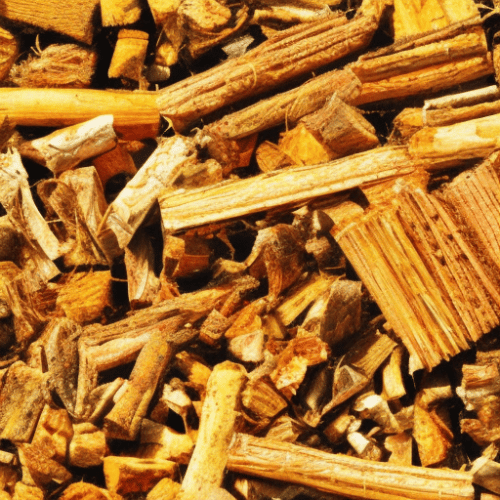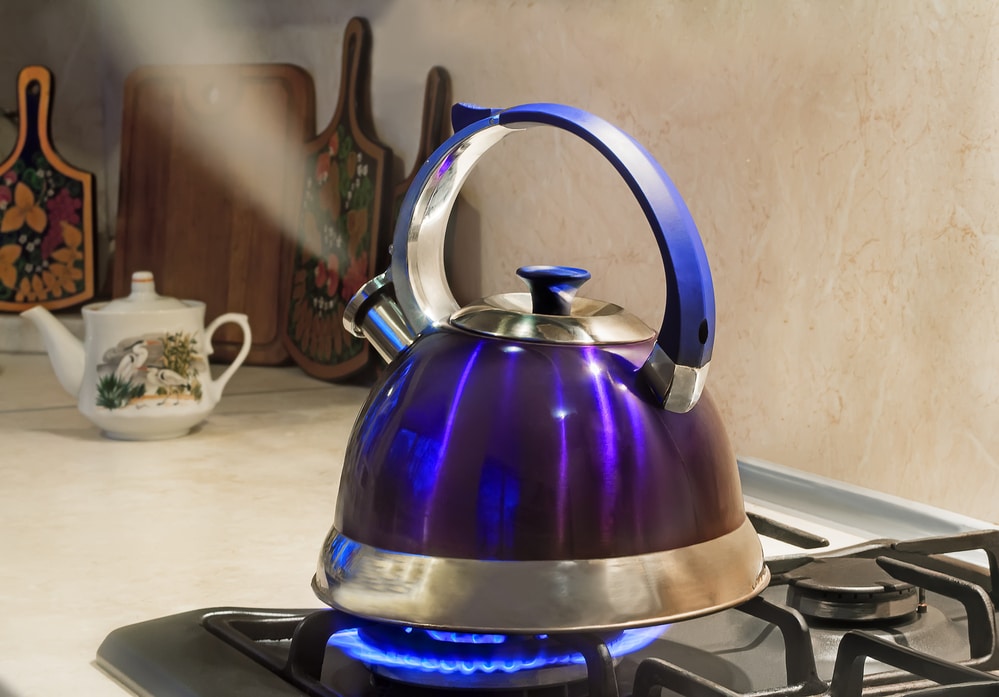Last Updated on
With the rising cost of electricity in the UK, it can be difficult to keep track of how much does it cost to boil a kettle. But what if we told you there are other ways to heat up your water without relying on traditional sources? From gas and solar power to alternative energy sources like wind or geothermal systems – there’s no need for us Brits to pay through our noses just so that we can enjoy a nice cup of tea. In this blog post, let’s look at how much it costs (or saves) when boiling a kettle with different methods available in the UK.
Table of Contents:
- Kettle Wattage and Cost of Electricity in the UK
- Boiling Water With Gas
- Boiling Water With Solar Power
- Boiling Water With Other Alternative Sources
- FAQs in Relation to How Much Does it Cost to Boil a Kettle
- Conclusion
Kettle Wattage and Cost of Electricity in the UK
Kettles are one of the most common household appliances in the UK. They’re used to boil water for tea, coffee, hot chocolate and more. But how much electricity does a kettle use? And how much does it cost to boil a full kettle in the UK?
The wattage of a typical electric kettle is between 2,000 and 3,000 watts. That means that when you switch on your kettle it will draw up to 3 kilowatts (kW) of power from your mains supply. This can be quite an energy-intensive process.
To work out how much it costs to boil a full 1 litre (1 quart) electric kettle in the UK, you need to know two things: The wattage of your particular model and the average price per kWh charged by your energy supplier.
Let’s assume we have an average 2 kW electric kettle with an average electricity price per kWh of 14 pence (14p). To calculate how much it would cost us to boil our 1 litre/quart electric kettle we simply multiply these two figures together: 2 x 0.14 = 0.28p or 28 pence (£0.28). So if you’re boiling just one full 1 litre/quart electric jug every day then over time this could add up significantly.
It’s also worth noting that some kettles come with variable temperature settings which allow you to choose exactly what temperature you want your water boiled at – usually ranging from 80°C all the way up to 100°C depending on what type of drink or food item you’re preparing at any given time. This feature can help save energy as well as money since different temperatures require different amounts of electricity usage – so make sure you check out this feature before buying any new appliance.
The cost of boiling a kettle in the UK depends on the wattage and electricity prices, but there are also other options available such as using gas. Let’s take a look at how this might affect your costs.
Boiling Water With Gas
Boiling water with gas is a great way to save money and energy. Whether you’re looking for an economical solution for your home or just want to boil some water while camping, using gas can be the most cost-effective option.

Gas stoves are typically more affordable than electric models, and they often require less energy to heat up a pot of water. Gas stoves come in both traditional and portable designs, so you can choose one that best fits your needs. When shopping for a stove, make sure it has enough BTUs (British Thermal Units) per hour to get the job done quickly – this will help keep costs down over time.
When it comes to boiling water on a gas stove, there are two main considerations: how much fuel you need and how long it takes to heat up the pot of water. Generally speaking, larger pots require more fuel than smaller ones; however, if you use a large pot but only fill it halfway with water then you won’t need as much fuel as if the pot was full. As far as heating times go, expect about 10 minutes from start to finish when boiling 1 litre of cold tap water on a medium heat setting with an average-sized stove burner (about 8 inches in diameter).
A 4kW electric kettle typically costs around £0.14p/hour to run, whereas an equivalent size 2kW gas burner would only cost £0.08p/hour – making it 40% cheaper. Depending on where you live, certain local authorities may offer discounts or subsidies towards purchasing new efficient appliances which could further reduce running costs even more.
Finally, when considering whether or not using gas is right for your situation, always take into account any safety risks associated with open flames. Always follow manufacturer instructions carefully when operating any type of appliance that uses combustible fuels such as natural gases.
Boiling water with gas is a cost-effective and efficient way to heat up large quantities of water quickly, but it’s not the only option – solar power can also be used to boil water in an environmentally friendly manner. Let’s take a look at how this works next.
Boiling Water With Solar Power
Boiling water with solar power is a great way to save money on energy bills and reduce your carbon footprint. Solar panels are becoming increasingly popular as an alternative source of energy, and they can be used to boil water in the same way that gas or electricity would.
To get started with boiling water using solar power, you’ll need some basic equipment: a set of solar photovoltaic (PV) modules; an inverter; a storage battery; and a hot-water tank or boiler system. You may also want to consider investing in additional items such as temperature controllers or pumps if needed for your specific setup. Once all these components have been installed correctly by a qualified electrician – who should also provide any necessary safety checks – then it’s time to start heating up your H2O.
When setting up your system, make sure that all parts are properly connected according to manufacturer instructions so that everything works safely together without the risk of damage from incorrect wiring or overloads caused by too much current passing through one component at once. It’s important not only for safety reasons but also because this will ensure maximum efficiency when boiling the water – otherwise, you won’t get the full benefit from having invested in this technology.
The amount of time taken to boil the water is contingent on the power of each individual panel, as well as external factors such as weather conditions. On sunny days, more efficient results are expected than on cloudy ones. Generally speaking, most systems take around 30 minutes per litre at normal temperatures during daylight hours when enough sunlight is available for optimal performance from PV modules; however, this may vary depending upon the exact specifications involved and should be checked beforehand.
Once heated up sufficiently via PV cells’ direct conversion process into usable electrical energy form, simply transfer the liquid contents over either manually (if small amounts) or via a pump mechanism attached directly to the hot-water tank itself (for larger quantities). Then just wait until the desired temperature is reached before turning off the switch/controller accordingly. And there you have it: freshly boiled H2O ready whenever required thanks solely to its own renewable resource usage methodologies employed here.
Solar power is an increasingly popular way to heat water, and it can be used for boiling as well. Boiling water with solar energy requires the installation of solar panels on your roof or in your yard. Solar panels absorb sunlight and convert it into electricity that can then be used to power a heating element, such as an electric kettle or immersion heater.
Boiling Water With Other Alternative Sources
When it comes to boiling water, there are a variety of alternative sources that can be used to heat up water for drinking and cooking.
Wind power is one such option. Wind turbines generate energy from wind which can then be converted into electricity and used to boil water in an electric kettle. This method is becoming increasingly popular as it is renewable, sustainable, and does not produce any emissions or pollutants when generating energy.
Geothermal energy is another way to boil water without relying on fossil fuels like gas or coal. Geothermal systems use underground pipes filled with hot steam generated by natural geothermal activity deep below the Earth’s surface. These pipes transfer heat directly into your home so that you can use it for heating up your water supply without having to rely on external sources of fuel like gas or electricity.

Biomass fuels are also an option when looking at alternative ways of boiling water without relying on traditional methods like gas and electricity consumption. Biomass fuels include wood chips, pellets, sawdust, straw bales etc., which all burn cleanly and efficiently while releasing minimal amounts of carbon dioxide into the atmosphere compared with other types of fuel combustion processes (e.g. burning coal).
Overall, many different alternatives are available when looking at how best to boil your daily cup(s) of tea. Each has its own advantages and disadvantages depending on factors such as cost-effectiveness versus environmental impact, so it is important to do research before deciding which type would work best for you.
FAQs in Relation to How Much Does it Cost to Boil a Kettle
Does boiling a kettle use a lot of electricity?
Yes, boiling a kettle does use a lot of electricity. The amount of energy used depends on the size and age of the kettle, as well as how full it is when boiled. Generally speaking, an average electric kettle will use around 2kWh per hour – that’s about the same amount of energy used by two 60W light bulbs in one hour. To save energy and money, make sure to only boil what you need and turn off your kettle after it has finished boiling.
What’s the cheapest way to boil water?
Boiling water is one of the quickest and most cost-effective ways to make it safe for drinking. The cheapest way to boil water is by using a kettle or pot on the stovetop. Simply fill your pot with cold tap water, place it over high heat, and wait until you see bubbles forming at the bottom of the pot. Once boiling, turn off the heat and let sit for 1 minute before pouring into a cup or other container. This method will ensure that all bacteria has been killed in order to make your water safe for consumption.
Conclusion
Depending on the wattage of your kettle and the cost of electricity in the UK, you may find that boiling water with gas or solar power is more economical than using other alternative sources. Ultimately, how much does it cost to boil a kettle depends on your individual circumstances and preferences. But whatever option you choose, remember that energy efficiency is key for reducing costs and helping protect our environment.
Paul is the type of person who never met a problem he couldn’t fix. He can always be found tinkering with something in his house, even if it isn’t broken! His tips and tricks are often shared on our site. He’s the one you call when something breaks because he has been known to improvise fixes for everything from leaky faucets to malfunctioning dryers.



